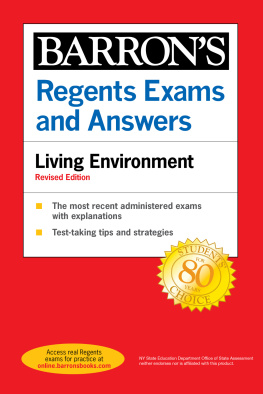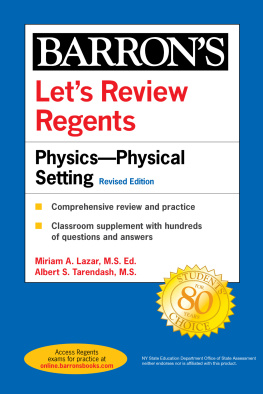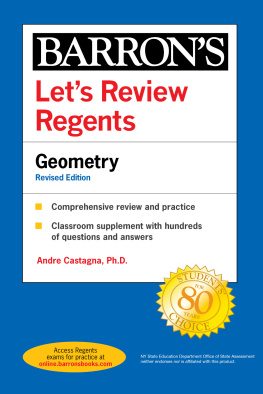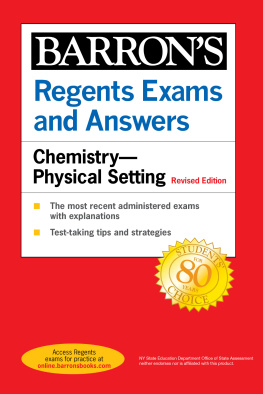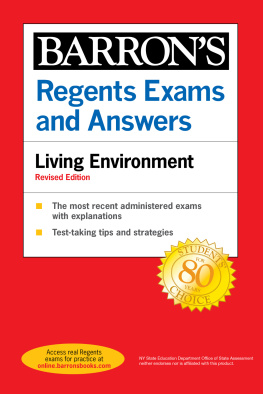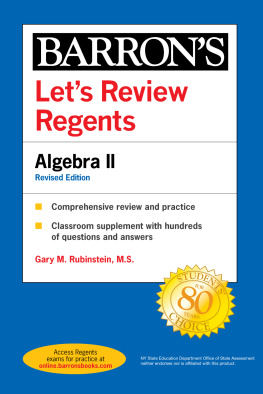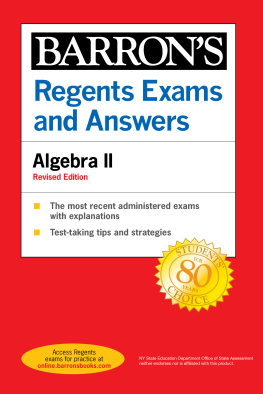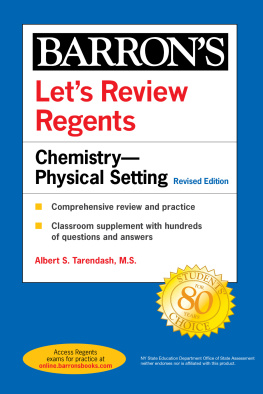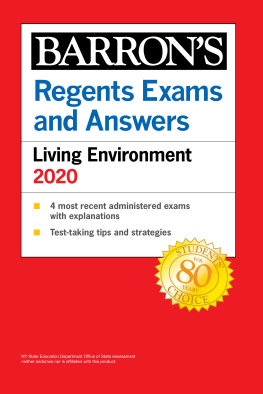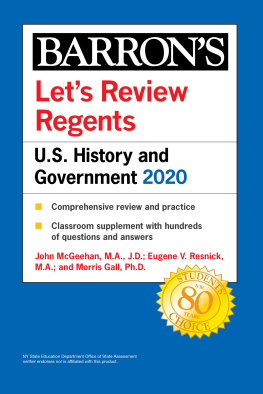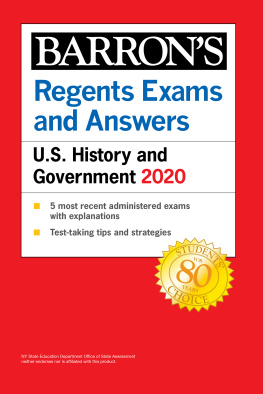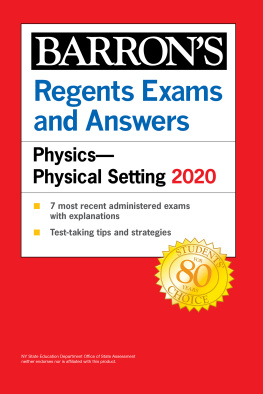Copyright 2021, 2020, 2018, 2017, 2016, 2015, 2014, 2013, 2012, 2011, 2010, 2009, 2008, 2007, 2006, 2005, 2004, 2003, 2002, 2001, 2000, 1999, 1998, 1997, 1996 by Kaplan, Inc., d/b/a Barrons Educational Series
All rights reserved under International and Pan-American Copyright Conventions. By payment of the required fees, you have been granted the non-exclusive, non-transferable right to access and read the text of this eBook on screen. No part of this text may be reproduced, transmitted, downloaded, decompiled, reverse engineered, or stored in or introduced into any information storage and retrieval system, in any form or by any means, whether electronic or mechanical, now known or hereinafter invented, without the express written permission of the publisher.
Published by Kaplan, Inc., d/b/a Barrons Educational Series
750 Third Avenue
New York, NY 10017
www.barronseduc.com
ISBN: 978-1-5062-7824-7
10 9 8 7 6 5 4 3 2 1
How to Use This Book
Organization of the Book
Study Questions
Section 1 of the book consists of 173 questions taken from past Regents examinations in biology. Most of the questions require that you select a correct response from four choices given. A few questions provide you with a list of words or phrases from which to select the one that best matches a given description. Others are constructed-response, graphical analysis, or reading comprehension questions. You should become familiar with the formats of the questions that appear on the Living Environment Regents examination.
Each question in Section 1 of this book has a well-developed answer. Each answer provides the number of the correct response, the reason why the response is correct, and explanations of why the other choices are incorrect.
A useful feature of Section 1 is the student Self-Appraisal Guide. This device allows you to determine where your learning strengths and weaknesses lie in the major topics of each unit. For specific topics within the units, the numbers of related questions are given. As you attempt to answer each question in Section 1, you may wish to circle on the appraisal form the numbers of the questions that you are unable to answer. The circled items then help you to identify at a glance subject matter areas in which you need additional study.
New York State Learning Standards
Commencement Standards
There are several commencement standards required of students in New York State public schools regarding their performance in math, science, and technology. The Core Curriculum for The Living Environment addresses two of these standards:
Standard 1: Students will use mathematical analysis, scientific inquiry, and engineering design, as appropriate, to pose questions, seek answers, and develop solutions.
Standard 4: Students will understand and apply scientific concepts, principles, and theories pertaining to the physical setting and living environment and recognize the historical development of ideas in science.
The Core Curriculum for The Living Environment was built from these two commencement standards. It is important to recognize that the Core Curriculum is not a syllabus. It does not prescribe what will be taught and learned in any particular classroom. Instead, it defines the skills and understandings that you must master in order to achieve the commencement standards for life science.
Instead of memorizing a large number of details at the commencement level, then, you are expected to develop the skills needed to deal with science on the investigatory level, generating new knowledge from experimentation and sharpening your abilities in data analysis. You are also expected to read and understand scientific literature, taking from it the facts and concepts necessary for a real understanding of issues in science. You are required to pull many facts together from different sources to develop your own opinions about the moral and ethical problems facing modern society concerning technological advances. These are thinking skills that do not respond to simple memorization of facts and scientific vocabulary.
Key Ideas, Performance Indicators, and Major Understandings
Each commencement standard is subdivided into a number of Key Ideas. Key Ideas are broad, unifying statements about what you need to know. Within Standard 1, three Key Ideas are concerned with laboratory investigation and data analysis. Together, these unifying principles develop your ability to deal with data and understand how professional science is carried out in biology. Within Standard 4, seven Key Ideas present a set of concepts that are central to the science of biology. These Key Ideas develop your understanding of the essential characteristics of living things that allow them to be successful in diverse habitats.
Within each Key Idea, Performance Indicators are presented that indicate which skills you should be able to demonstrate through your mastery of the Key Idea. These Performance Indicators give guidance to both you and your teacher about what is expected of you as a student of biology.
Performance Indicators are further subdivided into Major Understandings. Major Understandings give specific concepts that you must master in order to achieve each Performance Indicator. It is from these Major Understandings that the Regents assessment material will be drawn.
Laboratory Component
A meaningful laboratory experience is essential to the success of this or any other science course. You are expected to develop a good sense of how scientific inquiry is carried out by the professional scientist and how these same techniques can assist in the full understanding of concepts in science. The Regents requirement of 1,200 minutes of successful laboratory experience, coupled with satisfactory written reports of your findings, should be considered a minimum.
Students are required to complete four laboratory experiences required by the New York State Education Department and tested on the Regents Examination. See Barrons Lets Review: BiologyThe Living Environment for a complete treatment of this requirement.
Regents Examinations
Section 2 of the book consists of actual Biology Regents examinations and answers. These Regents examinations are based on the New York State Core Curriculum for the Living Environment.
Assessments: Format and Scoring
The format of the Regents assessment for The Living Environment is as follows, based on actual Regents examinations.
Part A: Variable number (usually 30) of multiple-choice questions that test the students knowledge of specific factual information. All questions must be answered on Part A.
Part B: Variable number (usually 25) of questions, representing a mixture of multiple-choice and constructed-response items. Questions may be based on the students direct knowledge of biology, interpretation of experimental data, analysis of readings in science, and ability to deal with representations of biological phenomena. All questions must be answered on Part B1-B2.
Part C: Variable number (usually 17) of multiple-choice and constructed-response questions. Questions may be based on the students direct knowledge of biology, interpretation of experimental data, analysis of readings in science, and ability to deal with representations of biological phenomena. All questions must be answered on Part C.
Part DLaboratory component: Variable number (usually 13) of multiple choice and constructed response items. This component of the examination aims to assess student knowledge of and skills on any of four required laboratory experiences supplied to schools by the New York State Education Department. The content of these questions will reflect specific laboratory experiences. You are strongly encouraged to include review of these laboratory experiences as part of your year-end Regents preparation activity.

